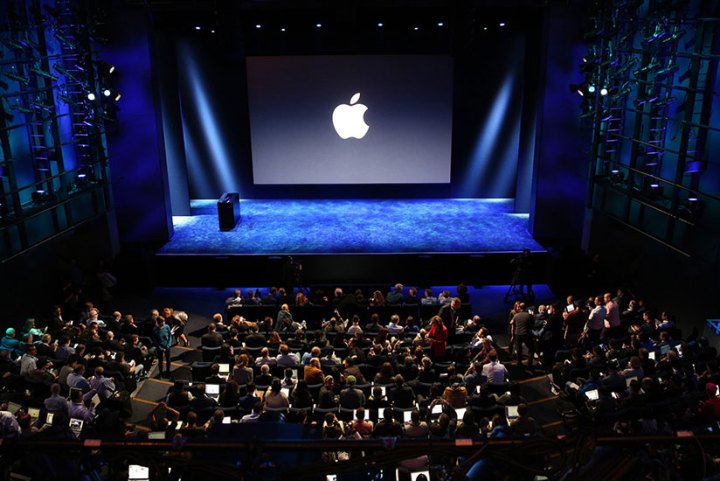
At a conference in Las Vegas today, Apple set aside its differences with corporate staple Cisco and announced a joint agreement to integrate iOS devices, including the iPad, with Cisco’s enterprise ecosystem. As part of the newly-inked deal, the networking giant will optimize iOS devices to perform reliably and develop a new cross-platform voice and video conferencing system. Furthermore, it’ll work to improve the iOS experience across Cisco’s litany of remote collaboration services — Cisco Spark, Cisco Telepresence, and Cisco WebEx among them.
The goal, said Apple Chief Tim Cook and Cisco Chairman John Chambers, is to create a “fast lane” for iOS devices in Cisco environments — in other words, make iOS devices perform optimally and work seamlessly with Cisco’s technology. “IPhone and iPad have become essential tools for the modern workforce and are changing the way work gets done,” Cook said. “Together with Cisco, we believe we can give businesses the tools to maximize the potential of iOS and help employees become even more productive using the devices they already love.”
Apple’s deal with Cisco, on the heels of a partnership with IBM to create enterprise apps in exchange for Apple device sales and support, is part of the company’s initiative to reinvigorate enterprise iOS device sales through backend agreements. The company chose its distribution partner carefully — Cisco, the world’s largest purveyor of switches and routing equipment, supplies infrastructure to 95 percent of companies in the Fortune 500.
The partnership comes amid increased enterprise-related competition among consumer electronics companies. Google’s Android at Work ecosystem, which it formally debuted in July, aims to unify corporate management of smartphones and tablets running Google’s mobile operating system. It launched with the support of all four major mobile U.S. carriers and “more than 10,000” partners according to Google.
But Apple, to be sure, is far from performing poorly in the sector. According to market research firm Good Technology, iOS held 72 percent of enterprise activations in May of this year, down 1 percent compared to the previous quarter. Android, by comparison, hit 26 percent of total activations in the same period.
Apple’s new enterprise partnerships are independent of the company’s hardware plans. According to rumors, Apple intends to position an upcoming 12.9-inch “iPad Pro” as a productivity device for workplaces.
Editors' Recommendations
- Here’s how Apple could change your iPhone forever
- Apple accidentally revealed a big iPad Pro display upgrade
- When will Apple release iOS 18? Here’s what we know
- The 7 biggest features we expect to see in iOS 18
- This could be our first look at iOS 18’s huge redesign


